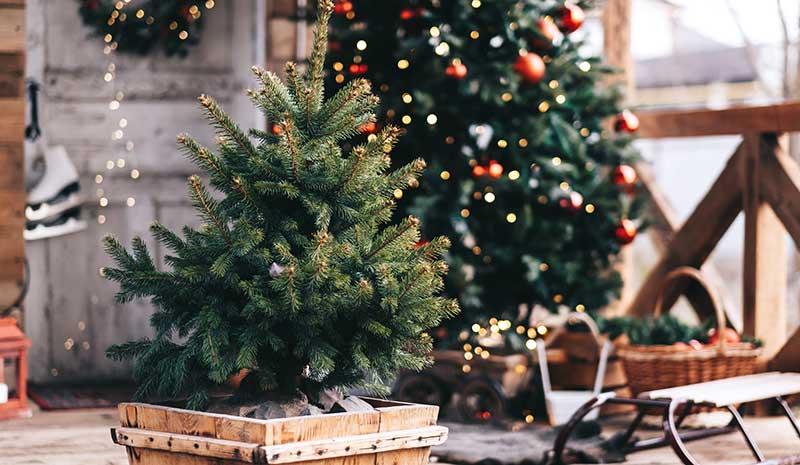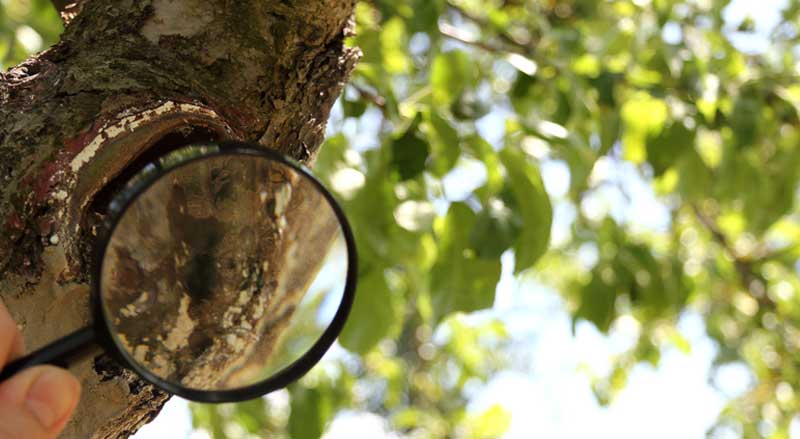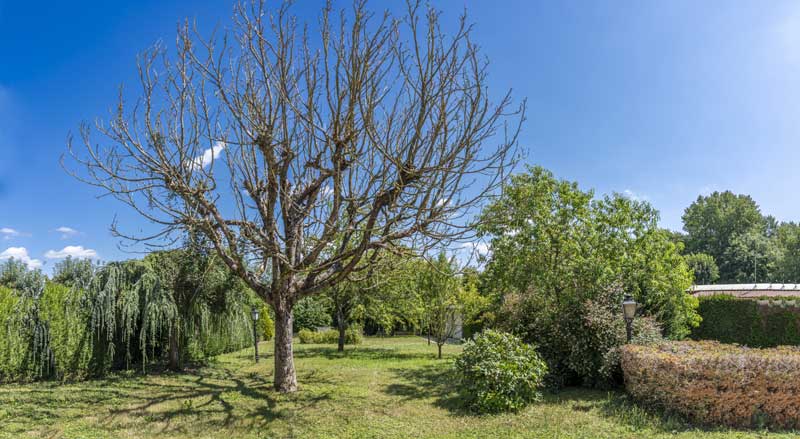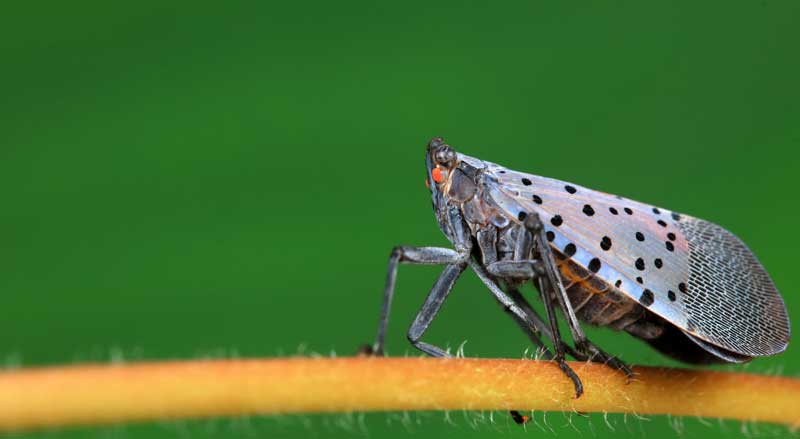Living Christmas trees keep family memories alive. Children get attached to their tree and have fun watching it grow. Parents have the added pleasure of watching their kids and the tree flourish together.
Live Christmas trees are potted trees.
Once You Decide to Buy a Living Christmas Tree:
- Plan a trip to your local nursery. Make it a family affair. Kids love to visit nurseries and help with tree selections. Some kids even name their new tree.
- Decide exactly where to replant the tree in the spring. This way you will know the growing space. You will also know the lighting conditions.
- Measure the ceiling height in the room it will visit.
- Before the ground freezes, dig a hole for the tree to be planted in, in the spring. Insulate the area with leaves.
You can learn more about when to plant your tree outside by looking at the U.S. Department of Agriculture plant hardiness zone map.
For example, northern New Jersey spans four zones: 6a, 6b, 7a, 7b. This information is used to calculate the best time to plant. Your local nursery should have this information.
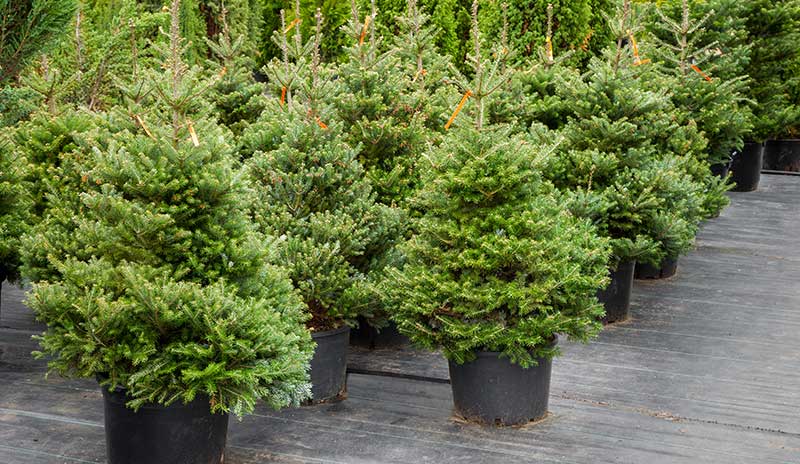
The Right Time to Visit the Nursery
Visit your nursery around Thanksgiving to avoid the Christmas rush. Many nurseries will hold your tree for you until you’re ready to take it home.
Be sure to take advantage of their expert advice. Let them know you are buying a living Christmas tree to be replanted in the spring.
Tell them:
- The size of the area the tree will have to grow into once it’s replanted
- Outside daily lighting conditions
- The height of your indoor ceiling
Be sure find out:
- Which planting zone are you in, and when to plan for the tree’s replanting
- Which types of trees thrive in your area — including light, size, soil, and climate considerations
- Instructions for transplanting your tree in the spring
- When to fertilize
- Projected growth of the tree you are buying
Now, find your new living Christmas tree!
Here’s how to find a healthy one:
- Check the tree for bald spots, or an unattractive trunk.
- Touch the needles. It’s okay if a few brown ones near the trunk fall off. But if needles near the ends of the branches fall off, find another tree. That tree is unhealthy, has insect damage, or is dried out.
Time to Bring the Tree Home
Plan to bring the tree home about two weeks before Christmas.
But once it’s home, don’t bring it into your house just yet.
- Leave the tree in a sheltered area for about a week so it can start adjusting to a new environment. A covered porch is a great transition zone.
- After about three days, hose the tree down. This removes unwanted pollen and mold.
- Give the roots a good watering.
- Let the tree dry thoroughly.
Then, just before the tree comes inside, shake it to remove any loose needles.
Don’t Transplant the Tree
Keep it in its original container. If you transplant the tree, it can go into shock. Surviving being transplanted and moved indoors, over a short time, is too much to ask of any tree.
If you hate the container, there’s a simple solution. Put the container into a large decorative pot for the holidays. This will also keep your floors safe from water.
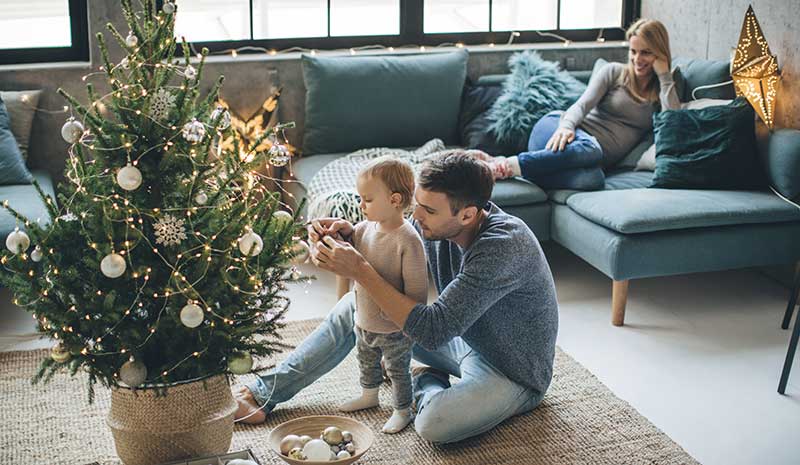
Your Potted Tree Needs Sunlight
Place the tree where it will get lots of natural filtered light. Putting it next to a window with sheer curtains is fine.
Avoid placing the tree close to:
- Heat vents
- Working fireplaces
- Stoves
- Space heaters
- Drafts
Your tree enjoys cooler temperatures. You can lower the heat and wear a sweater. This will keep your wallet and your tree happy!
What Do You Feed a Potted Christmas Tree?
Water the tree every day. A potted tree dries out quickly, so be generous, but don’t over water.
You can place ice cubes on the soil for watering. The ice will slowly dissolve; the tree absorbs the water before it runs out the bottom of the container.
If you see your potted tree has yellowing needles or brown needles, you may fear your tree is dying. It’s trying to tell you something.
Feel the needles. If they feel too soft, the tree is being over-watered. If the needles are brown and crisp, the tree is thirsty. These needles probably won’t recover, but the tree can be saved.
Is Your Tree Root Bound?
Yellowing needles also can mean a tree is root bound. Grasp the tree by the trunk and gently pull up. If the entire root ball easily leaves the pot, it is root bound.
Replant the tree in a larger container. Give the roots ample space to grow–but not too much space. An oversized container holds more water and can cause root rot.
In severe root bound cases, trim the root ball 2-3 inches off the bottom and sides.
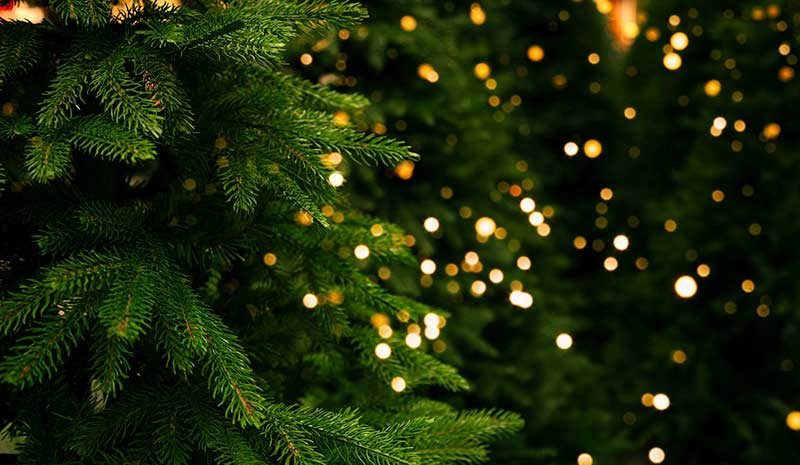
Decorating Your Living Tree
Remember, your tree is a living thing, and it needs some TLC. Don’t use Christmas lights that have large bulbs. The tree’s needles can get burnt. Your tree will do well with light strings or, even better, LED lights.
Return to the Great Outdoors!
Make sure that the tree stays inside for no longer than a week to ten days.
When the holidays are over, put the tree back in the original sheltered location it visited upon arrival. Water it well. Be sure to soak the root ball.
After one week, move the container to a spot where it will enjoy plenty of outdoor sunshine.
Spring Will Be Here Soon!
Next year, plant your tree outdoors in early spring, as directed by the nursery.
Also fertilize it, as directed.
Your transplanted tree will be happy where it can soak up the sunlight.
It will provide year-round Christmas memories for your family.

